If you know, you know—and if you don’t know, let me introduce you to one of Mumbai’s greatest culinary gifts: pav bhaji. It’s spicy, buttery, messy in the best way, and totally addictive. This is the kind of dish that tastes like street food heaven but is secretly packed with vegetables. Yes, that pav bhaji.
I’ve tested and tweaked this recipe to get that perfect mashy-yet-chunky consistency and deep, buttery flavor that makes you go back for seconds… and thirds. This is the pav bhaji I crave when I want comfort food with bold flavor and not a lot of fuss. Serve it with a side of mango lassi for the full street food experience!
This website uses affiliate links which may earn commission for purchases made at no additional cost to you.
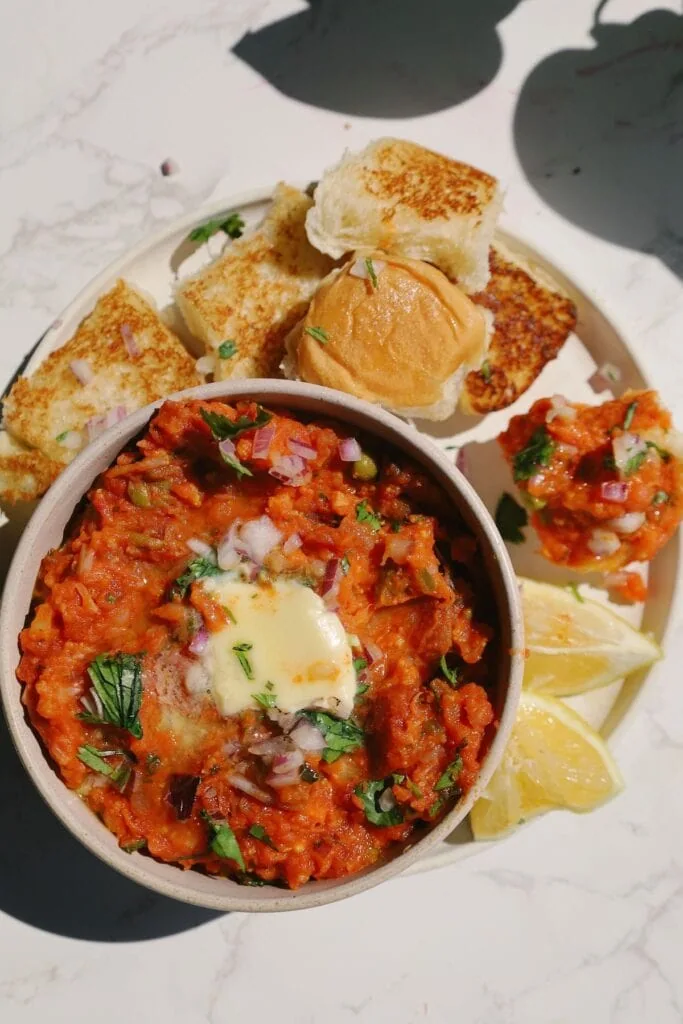
What is Pav Bhaji?
Pav bhaji is a popular Indian street food made from a spiced vegetable mash (bhaji) served with toasted buttered rolls (pav). The bhaji is rich, savory, and slightly tangy—loaded with vegetables like potatoes, cauliflower, peas, and carrots, all cooked down with tomatoes, onions, garlic, and a special spice blend called pav bhaji masala.
It’s hearty, flavorful, and built for scooping up with fluffy, golden rolls. Think of it as the Indian version of sloppy joes—but way more flavorful.
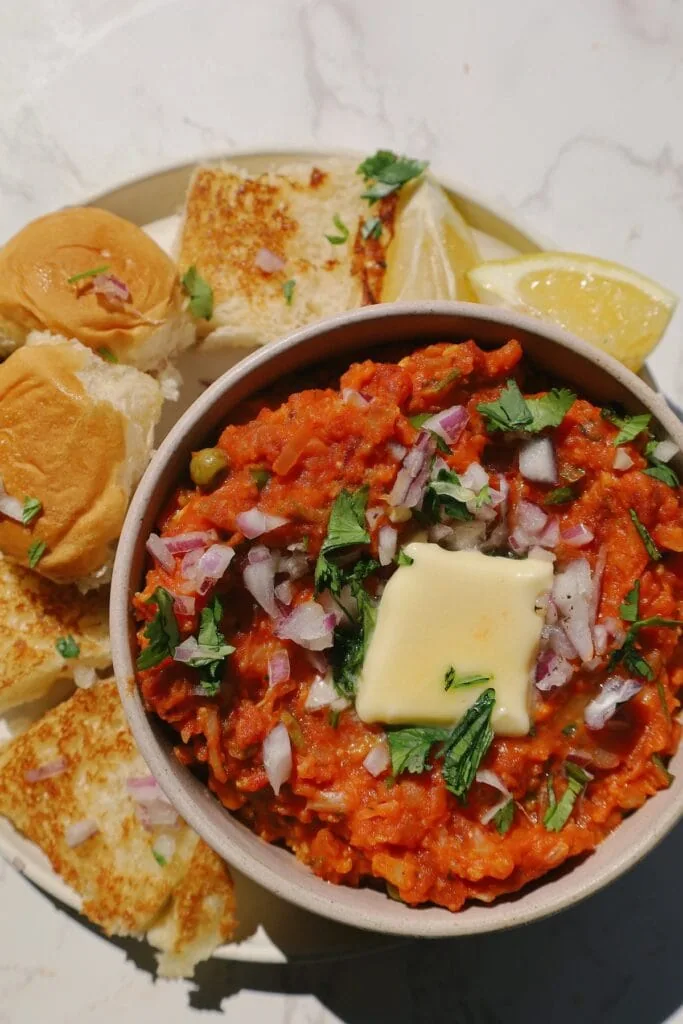
History of Pav Bhaji
Pav bhaji was born in the fast-paced chaos of Mumbai in the mid-1800s. It started as a quick, filling meal for mill workers who needed something hot, cheap, and easy to eat on the go. Street vendors began mashing leftover vegetables with spices and serving them with buttered pav (bread rolls)—and the rest is delicious history.
Today, it’s not just street food—it’s comfort food. It’s found everywhere from roadside stalls to high-end restaurants. For many, it’s the taste of childhood, late-night cravings, or monsoon evenings spent indoors with a steamy plate of bhaji and extra butter on the side.
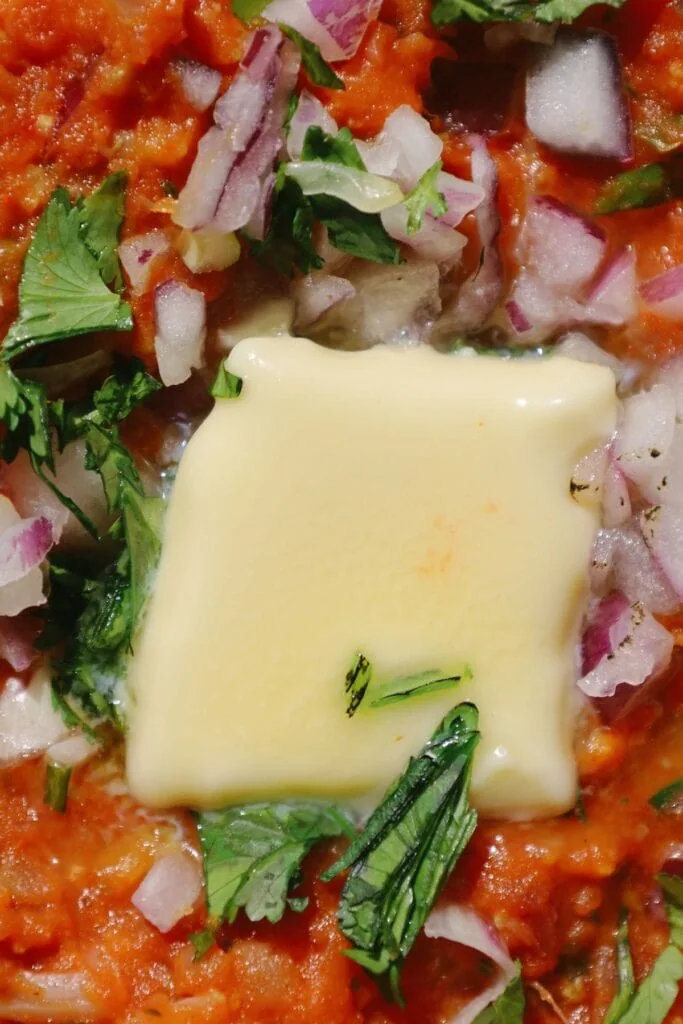
Key Ingredients (and why they matter)
If you want to make the best pav bhaji, make sure you have the following ingredients:
- Vegetables (Potatoes, Cauliflower, Peas): The foundation of the bhaji. Potatoes give it body, cauliflower adds texture and sweetness, and peas round it out.
- Red Onion, Garlic, Ginger, Green Chili: The aromatics that make the flavor pop. Garlic and ginger build depth, and the chili brings the heat.
- Canned Crushed Tomatoes: For that rich, tangy base. Using canned tomatoes saves time and gives a consistent flavor (no worrying about sour fresh tomatoes).
- Butter + Oil: Butter gives that classic street-style richness. A bit of oil helps prevent it from burning during the sautéing stage.
- Cumin Seeds: A toasty, nutty note at the beginning that sets the stage for everything else.
- Pav Bhaji Masala: The heart and soul of this dish. It’s a spice mix that includes coriander, fennel, cinnamon, cloves, and more. No substitutes here—this is essential.
- Kashmiri Mirch: Adds gorgeous red color and mild heat without overpowering.
- Turmeric: For earthiness and that signature golden hue.
- Water: Adjust based on how thick or saucy you like your bhaji.
- For Serving: Lime juice (for brightness), chopped red onion (crunch + bite), cilantro (herbal freshness), extra butter (obviously), and warm toasted bread rolls.
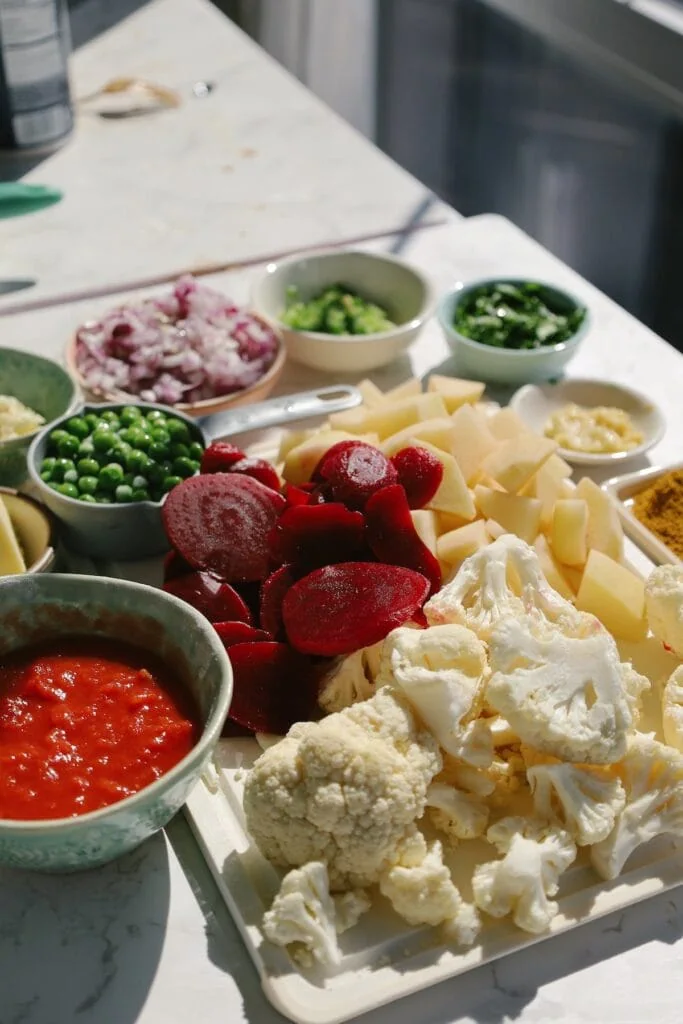
How to Make Pav Bhaji
- Boil potatoes, cauliflower, peas, and beets until tender—about 15 minutes.
- Lightly mash the veggies. Don’t overdo it—you want some texture!
- Sauté onions, garlic, ginger, and chili in butter and oil until golden.
- Add spices and crushed tomatoes, then cook until thick and jammy.
- Stir in the mashed veggies, a bit of reserved broth, and simmer until flavors meld.
- Create a butter “well” in the center with Kashmiri chili and cilantro—stir it in for richness and color.
- Serve hot with toasted Hawaiian rolls, more butter, red onion, and lemon.
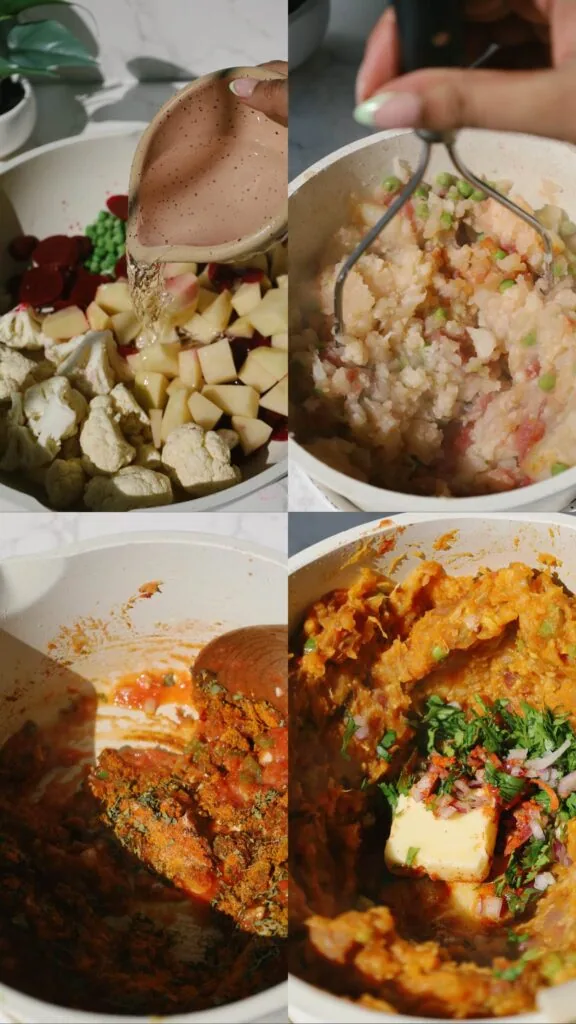
Variations and Substitutions
You can make pav bhaji with whatever vegetables you have lying around! Pav bhaji was originally a dish of necessity, made by vendors and home cooks using whatever vegetables they had leftover. It was a brilliant way to stretch produce, reduce waste, and still make something filling and flavorful.
The beauty of pav bhaji is in its flexibility. As long as you have a mix of starchy and non-starchy vegetables, you’re good to go. Potatoes give the dish body, while things like cauliflower, carrots, peas, and bell peppers add texture and subtle sweetness. You can toss in green beans, beets, zucchini, or even cabbage if that’s what you’ve got on hand. Just avoid anything too watery (like cucumbers) or strongly bitter (like bitter gourd).
So if your fridge is looking like a veggie clearance sale, pav bhaji is your answer. Clean-out-the-crisper night never tasted so good.
You can also make this recipe fully vegan by subbing out butter for oil.

Serving Suggestions
Pav bhaji is practically a meal on its own, but here’s what else I love pairing it with:
- Masala Chai – For that true Mumbai street food vibe.
- Chili Paneer – Adds a spicy, Indo-Chinese kick.
- Pistachio Kulfi – To cool down after your meal!
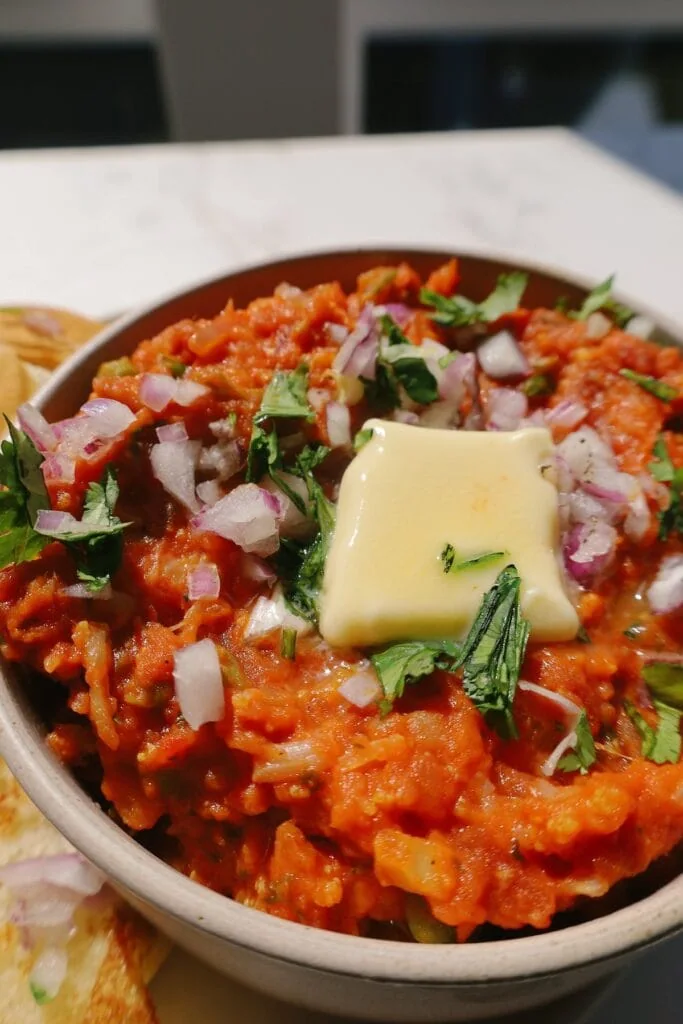
More Recipes You’ll Love
FAQ
Absolutely. It actually tastes better the next day. Just reheat gently and stir in a little water or butter if it’s too thick.
Yes! Just leave out the garnishes and freeze the bhaji in an airtight container for up to 2 months.
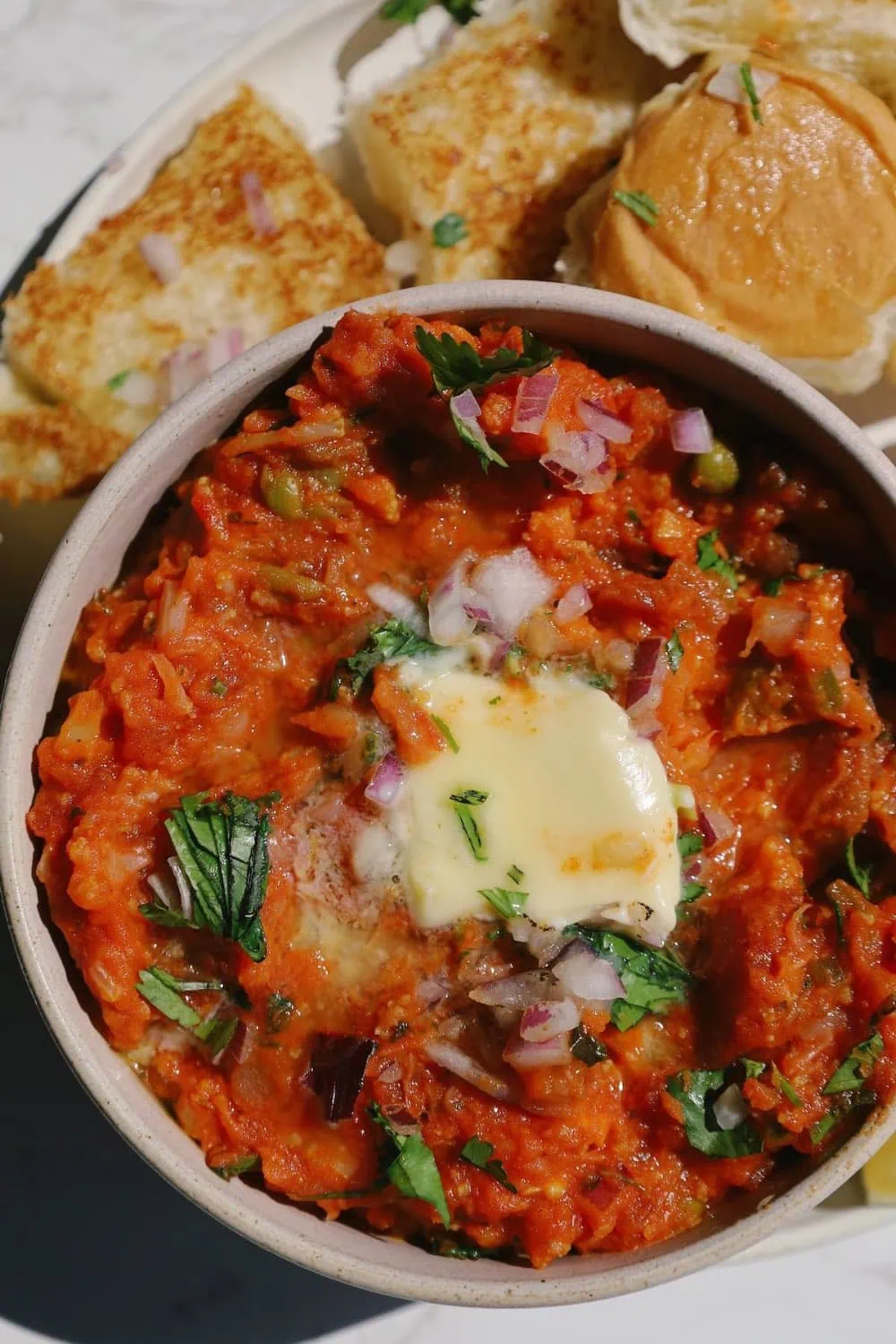
Pav Bhaji
Ingredients
Vegetable Base
- 2 potatoes (about 550 grams)
- 10 ounces cauliflower florets
- 1 canned sliced beets
- 1/2 cup green peas
- 1/2 cup peeled crushed canned tomatoes
- 1.5-2 tsp ginger paste
- 1 green chili
- 1/2 cup finely chopped red onion
- 2 tbsp finely chopped Garlic
- 2 tbsp Butter
- 2 tbsp Oil
- 1-2 tsp Red chili powder
- 1/4 – 1/2 tsp Turmeric
- Salt to taste
- 1 tbsp Pav bhaji masala
- 1 tbsp Kasoori methi
- 5 drops red food coloring (optional)
Chili Butter Topping:
- 2 tbsp butter
- 2 tbsp chopped cilantro
- 2 tbsp chopped red onions
- 1 tsp kashmiri chilli
Final garnish:
- Lemon
- Cilantro
- Chopped red onions
- butter
Serve with:
- Hawaiian rolls
Instructions
- Boil the Veggies: In a large pot, boil potatoes, cauliflower, green peas, and sliced beets in salted water for about 15 minutes or until tender. Pro tip: Save some of the broth—it adds amazing flavor when adjusting consistency later or reuse it in soups like pho!
- Mash Lightly: Drain the veggies and mash gently. You want a rustic texture, not baby food. Don’t over mash—some chunkiness is good.
- Sauté Aromatics: In a large skillet, heat 2 tbsp butter and 2 tbsp oil. Add finely chopped onions and sauté until translucent. Then add garlic, ginger paste, and green chili. Cook until fragrant.
- Spice it Up: Add pav bhaji masala, red chili powder, turmeric, and kasoori methi. Stir for 30–60 seconds to bloom the spices.
- Add Tomatoes: Pour in the crushed tomatoes and cook for 5–7 minutes until the mixture thickens and the oil starts to separate.
- Combine Veggies and Simmer: Add the lightly mashed veggies and mix well. Add reserved broth or water to loosen as needed. Simmer for 10–15 minutes, stirring occasionally.
- Create the “Butter Well”: Push the bhaji aside to make a small well in the center. Add 2 tbsp butter, 1 tsp Kashmiri chili, chopped cilantro, and let it sizzle. Mix it into the bhaji for an extra glossy finish.
- Toast the Pav: Slice Hawaiian rolls and toast on a skillet with butter until golden and crispy. You can also serve them plain if you’re being virtuous (I’m usually not).
- Garnish and Serve: Spoon bhaji into bowls, top with more butter, red onion, cilantro, and a generous squeeze of lemon. Dig in with the warm toasted rolls.

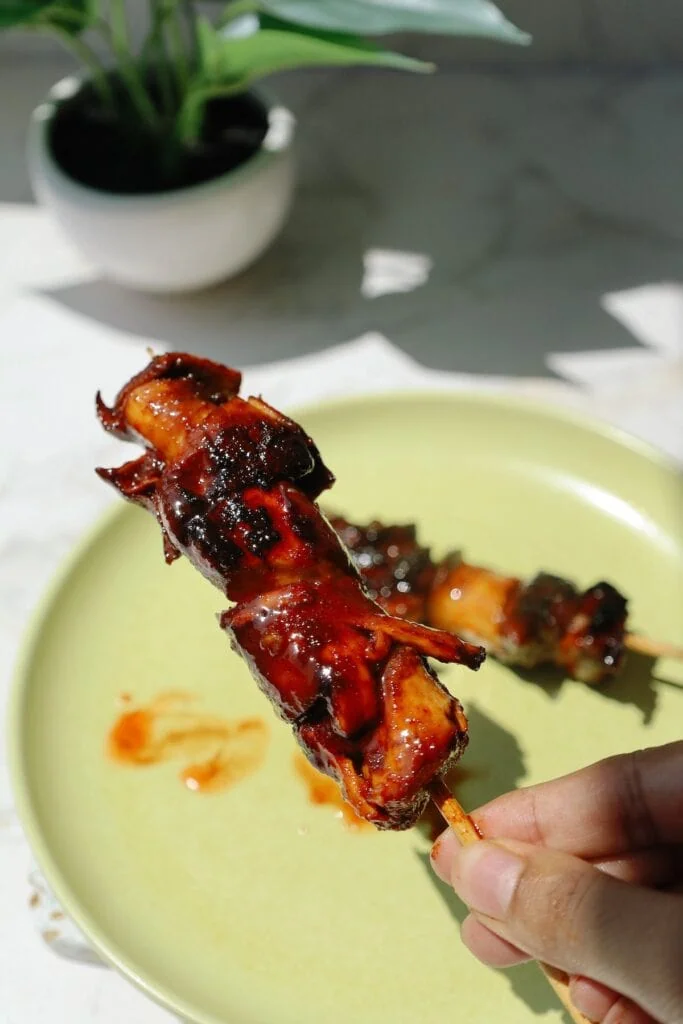



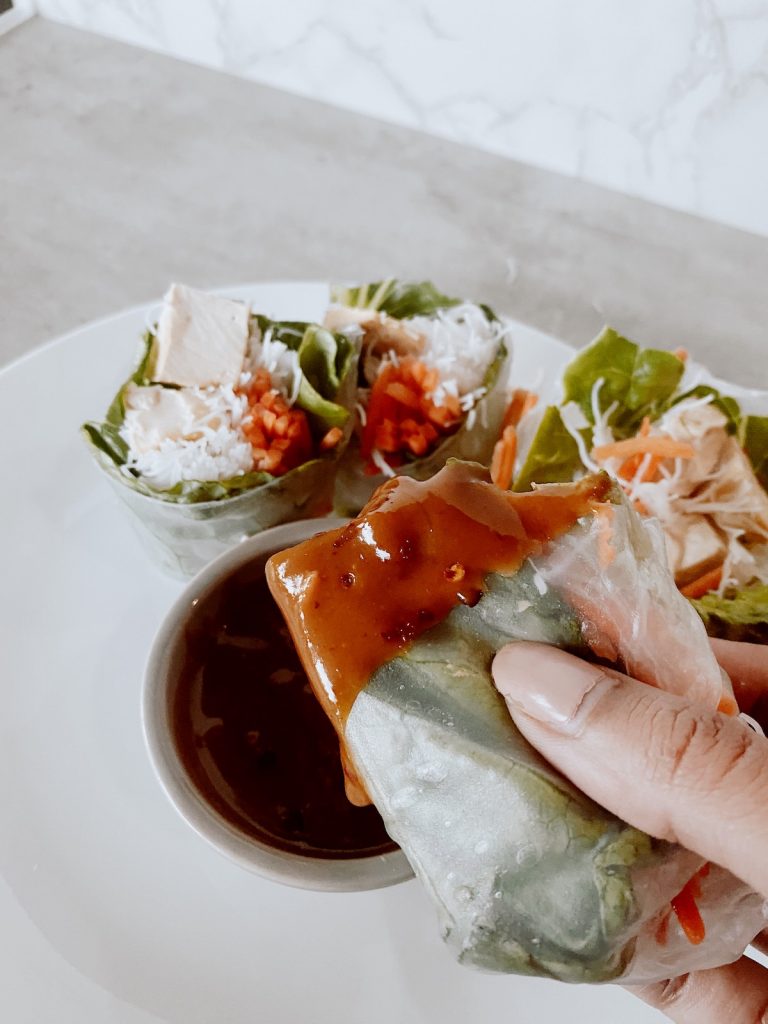
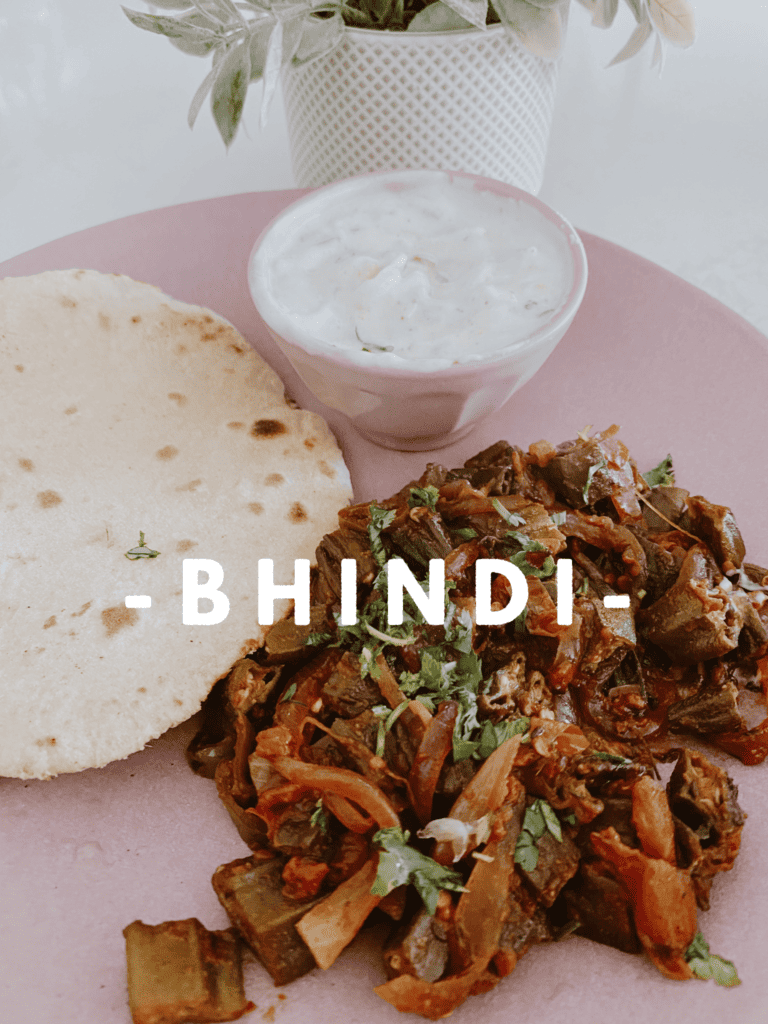
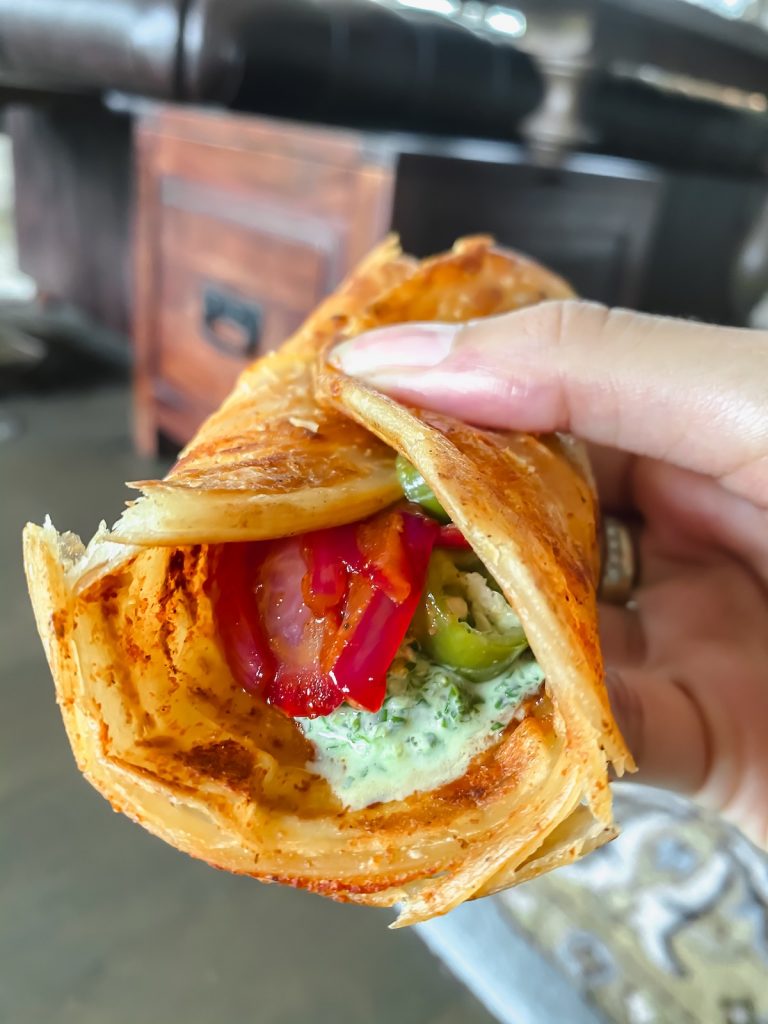
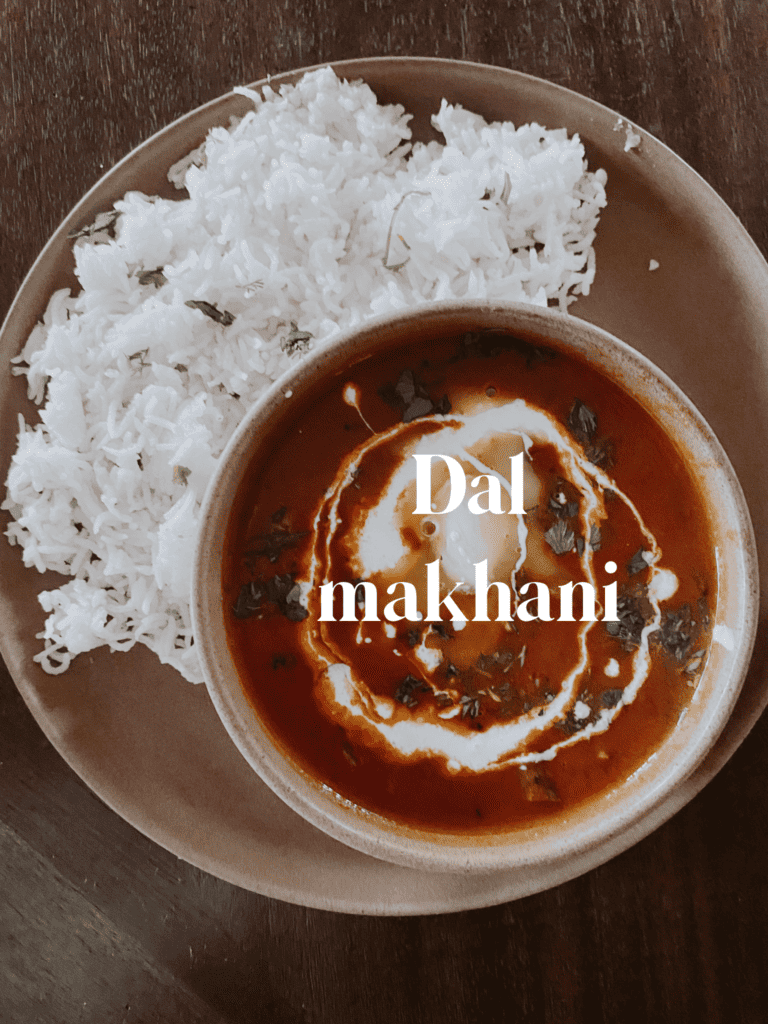




What did you think of this recipe?